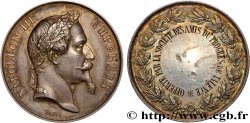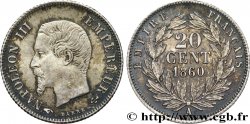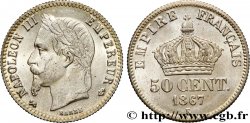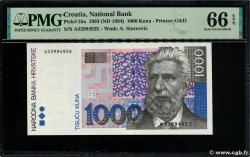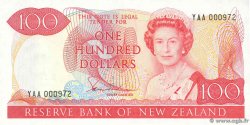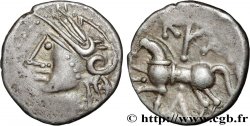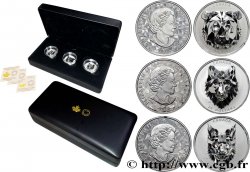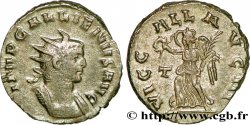MONNAIES 10 (2000)
Starting price : 152.45 €
Estimate : 533.57 €
Realised price : 321.67 €
Starting price : 152.45 €
Estimate : 533.57 €
Realised price : 321.67 €
Type : 5 francs or Napoléon III, tête nue, grand module
Date: 1859
Mint name / Town : Paris
Quantity minted : 5741592
Metal : gold
Millesimal fineness : 900 ‰
Diameter : 17 mm
Orientation dies : 6 h.
Weight : 1,60 g.
Edge : cannelée
Coments on the condition:
Ce qui frappe au premier coup d'œil sur cet exemplaire extraordinaire est le brillant très particulier du flan, formé de petits espaces de lumière. Enquête menée auprès d'un collectionneur spécialisé dans ces émissions, tous les exemplaires en états exceptionnel de 5 francs grand module vus avaient cet aspect. Il est probable qu'une nouvelle technique de préparation des flans ou des coins fut mise en œuvre à l'occasion de l'arrivée d'Albert-Désiré Barre mais que seules les monnaies extrêmement fines comme les 5 francs gardent visible la marque de cette nouvelle préparation. L'impact visuel est très particulier, l'effigie semblant flotter légèrement au-dessus de petites taches lumineuses. Malheureusement, les photos ne rendent pas compte de cet effet qui n'est perceptible qu'en bougeant la pièce dans la lumière. La frappe de cette monnaie est excellente et présente une particularité intéressante : à la loupe et sous un bon éclairage, on distingue sous l'oreille de Napoléon III un R inversé. Notre monnaie a manifestement été frappée en deux fois sur une frappe incuse et le R inversé est le R de FRANCS. Les coins sont très frais, celui du revers à fleur, aucun défaut visible à l'œil, la loupe x10 révèle d'infimes lignes dans le velours, sur le cou, par exemple, et quelques très légères traces de cheveux devant le visage
Catalogue references :
Obverse
Obverse legend : NAPOLEON III EMPEREUR.
Obverse description : Tête nue de Napoléon III à droite ; au-dessous (différent) BARRE (différent), le long du listel.
Reverse
Reverse legend : EMPIRE FRANCAIS.
Reverse description : 5 / FRANCS, en deux lignes dans le champ, au-dessus de 1859, dans une couronne composée de deux branches de laurier nouées en bas ; sous le nœud, la lettre d'atelier A.
Commentary
Cet exemplaire est celui de la COLLECTION IDÉALE. Il illustre le type dans le FRANC III en couleurs. Cet exemplaire est de loin le plus beau référencé dans la COLLECTION IDÉALE.







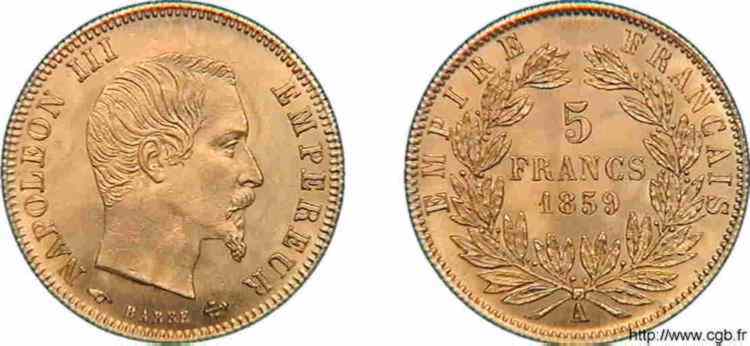
 Report a mistake
Report a mistake Print the page
Print the page Share my selection
Share my selection Ask a question
Ask a question Consign / sell
Consign / sell
 Full data
Full data